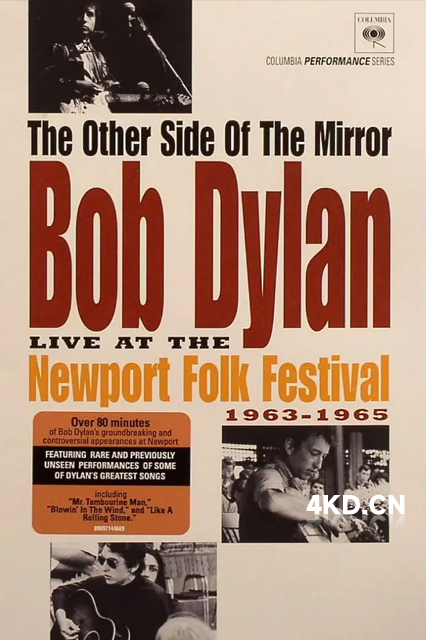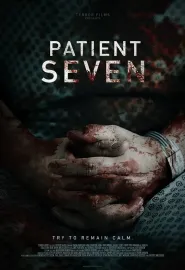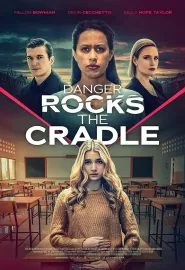镜子的另一面:纽波特民歌艺术节1963~1965 The Other Side of the Mirror: Live at Newport Folk Festival ...

名称:镜子的另一面:纽波特民歌艺术节1963~1965 The Other Side of the Mirror: Live at Newport Folk Festival 1963-1965
产地: 美国
语言: 英语
片长: 83min
导演: Murray Lerner
主演: Bob Dylan / Joan Baez / Judy Collins
豆瓣:8.9分 (共180人参与评分)
镜子的另一面:纽波特民歌艺术节1963~1965 The Other Side of the Mirror: Live at Newport Folk Festival 1963-1965的剧情介绍
"Bob Dylan going electric" at the 1965 Newport Folk Festival is one of those epochal moments in rock history that seemingly everyone has heard about, but what few people seem to know is that it wasn't some ephemeral event that we only know from word of mouth -- filmmaker Murray Lerner documented the performances at the Newport Festival for several years running, and The Other Side of the Mirror collects footage from the three years Dylan appeared at the celebrated folk gathering, allowing us to see Dylan's rise through the folk scene for ourselves. Watching Lerner's documentary, what's most remarkable is how much Dylan changed over the course of 36 months; the young folkie performing at the afternoon "workshop" at the side of Joan Baez in 1963 is at once nervy and hesitant, singing his wordy tunes while chopping away at his acoustic guitar and energizing the crowd without seeming to know just what he's doing. In 1964, Dylan all but owns Newport, and he clearly knows it; he's the talk of the Festival, with Baez and Johnny Cash singing his praises (and his songs), and his command of the stage is visibly stronger and more confident while his new material (including "Mr. Tambourine Man" and "It Ain't Me, Babe") sees him moving away from the "protest songs" that first made his name. When the audience demands an encore after Dylan's evening set (Odetta and Dave Van Ronk were scheduled to follow him), Peter Yarrow tries to keep the show moving along while Dylan beams at the crowd's adulation, like the rock star he was quickly becoming. By the time the 1965 Newport Festival rolled around, Dylan's epochal "Like a Rolling Stone" was starting to scale the singles charts, and the hardcore folk audience was clearly of two minds about his popular (and populist) success. When Dylan, Fender Stratocaster in hand, performs "Maggie's Farm" backed by Al Kooper, Mike Bloomfield and the rhythm section from the Paul Butterfield Blues Band, the raucous but hard-driving number inspires a curious mixture of enthusiastic cheering and equally emphatic booing, and while legend has it that the version of "Like a Rolling Stone" that followed was a shambles, the song cooks despite drummer Sam Lay's difficulty in finding the groove, though if anything the division of the crowd's loyalties is even stronger afterward. After these two numbers, Dylan and his band leave the stage, with Yarrow (once again serving as MC) citing technical problems (if Pete Seeger really pulled the power on Dylan, as legend has it, there's no sign of it here); Dylan returns to the stage with an acoustic six-string to sing "Mr. Tambourine Man" and "It's All Over Now, Baby Blue" before vanishing into the night without comment. While much of the audience at Newport in 1965 wanted the "old" Dylan back, his strong, willful performances even on the acoustic stuff makes it obvious that the scrappy semi-amateur we saw at the beginning of the movie was gone forever, and the ovations suggest more than a few people wanted to see Dylan rock. Lerner's film tells us a certain amount of what we already knows, but it gently debunks a few myths about Dylan during this pivotal moment in his career, and his performances are committed and forceful throughout; no matter how many times you've read about Dylan's Newport shoot-out of 1965, seeing it is a revelatory experience, and Lerner has assembled this archival material with intelligence and taste. This is must-see viewing for anyone interested in Dylan or the folk scene of the '60s. 机翻
1965年纽波特民俗节上的“鲍勃·迪伦电气化”是摇滚史上一个划时代的时刻,似乎每个人都听说过,但似乎很少有人知道的是,这不是我们只从口口相传中知道的短暂事件——电影制作人穆雷·勒纳连续几年记录了纽波特音乐节上的表演,《镜报的另一面》收集了迪伦在著名的民俗聚会上出现的三年的录像,让我们亲眼目睹了迪伦在民俗场景中的崛起。观看勒纳的纪录片,最引人注目的是迪伦在36个月的时间里发生了多大的变化;1963年,这位年轻的民谣演员在琼·贝兹(Joan Baez)身边的下午“工作坊”中表演,他既紧张又犹豫,一边唱着他冗长的曲调,一边砍着他的原声吉他,给观众带来活力,却似乎不知道自己在做什么。1964年,迪伦几乎拥有纽波特,他清楚地知道这一点;他是音乐节上的热门话题,贝兹和约翰尼·卡什都对他赞不绝口(以及他的歌曲),他对舞台的掌控力明显更强、更自信,而他的新作品(包括《铃鼓男先生》和《宝贝,这不是我》)则让他远离了最初让他出名的“抗议歌曲”。当观众在迪伦的晚间演出结束后要求再次演出时(奥德塔和戴夫·范·朗克计划跟随他),彼得·亚罗试图让演出继续进行,而迪伦则像他很快成为的摇滚明星一样,对观众的奉承报以微笑。到1965年纽波特音乐节到来时,迪伦划时代的《像滚石一样》开始登上单曲榜,而铁杆民谣观众显然对他的流行(和民粹主义)成功持怀疑态度。当拿着Fender Stratocaster的Dylan在Al Kooper、Mike Bloomfield和Paul Butterfield Blues Band的节奏部分的支持下表演《Maggie’s Farm》时,这首喧闹但激烈的歌曲激发了热情的欢呼和同样强烈的嘘声,虽然传说接下来的《Like a Rolling Stone》版本是一团糟,但尽管鼓手Sam Lay很难找到合适的节奏,这首歌还是很有意思的,尽管之后观众的忠诚度分歧更大。在这两个数字之后,迪伦和他的乐队离开了舞台,雅罗(再次担任MC)以技术问题为由(如果皮特·西格真的像传说中那样对迪伦施加了压力,这里没有任何迹象);迪伦带着六弦原声音乐回到舞台,演唱了《铃鼓男先生》和《现在一切都结束了,蓝色宝贝》,然后消失在夜色中,没有任何评论。虽然1965年纽波特的大部分观众都希望“老”迪伦回来,但他即使在声学方面也表现得很强,很明显,我们在电影开始时看到的好斗的半业余爱好者已经永远消失了,欢呼声表明不止几个人想看迪伦摇滚。勒纳的电影告诉了我们一些我们已经知道的东西,但它温和地揭露了迪伦在职业生涯的这个关键时刻的一些神话,他的表演自始至终都是坚定而有力的;无论你读过多少次迪伦1965年在纽波特的拍摄,看到它都是一种启示性的体验,勒纳以智慧和品味收集了这些档案材料。对于任何对迪伦或60年代的民间场景感兴趣的人来说,这是必看的。
观影地址⏬
The.Other.Side.of.the.Mirror.Bob.Dylan.at.the.Newport.Folk.Festival.2007.1080p.BluRay.AAC5.1
magnet:?xt=urn:btih:ecc2c41d1a50ba0af2e19c28852eb9602ad94329 |  《封神第一部:朝歌风云 2023》封神第一部/2881 人气#4K华语
《封神第一部:朝歌风云 2023》封神第一部/2881 人气#4K华语![乡村爱情17 2025 [中国大陆] 豆瓣:](data/attachment/block/85/85b73969d45b7bea9f7941492622ec01.jpg) 乡村爱情17 2025 [中国大陆] 豆瓣:1983 人气#夸克网盘
乡村爱情17 2025 [中国大陆] 豆瓣:1983 人气#夸克网盘 密室大逃脱 第五季 2023 密逃5/密室大逃脱51970 人气#其他
密室大逃脱 第五季 2023 密逃5/密室大逃脱51970 人气#其他 《美国队长4 Captain America: Brave New W1777 人气#4K电影
《美国队长4 Captain America: Brave New W1777 人气#4K电影




